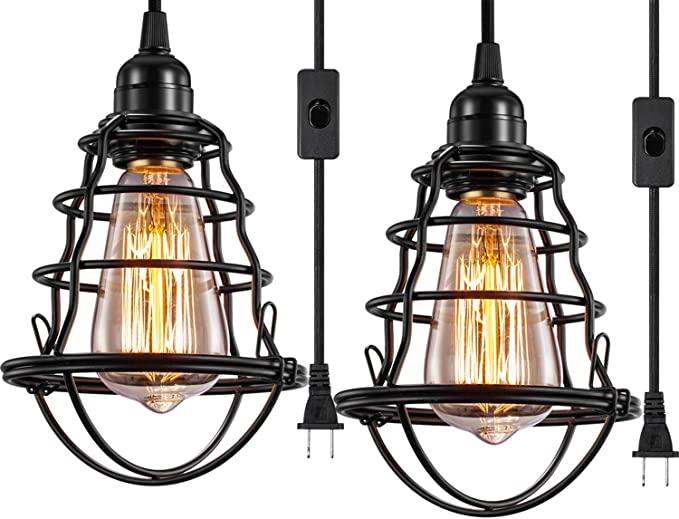Lighting trends: Pull the plug on dated light fixtures
“Eeeeeeek!” My husband heard my scream from two rooms away.
“What’s wrong?” he says, finding me in the dining room, my eyes locked on the ceiling.
“A huge tarantula is hanging over our table!”
He rolls his eyes. “I am well aware you want new light fixtures,” he says, then goes back to his laptop.
“And one over here!” I point to the entryway, where a similar oversized, oil-rubbed bronze, Mediterranean style fixture dangled from a heavy metal chain like something out of a medieval torture chamber. “How have we lived with these!? We must act.”
To which he said nothing, which I took to mean go ahead.
In fairness to me, I had been saying for months, as we sheltered in place staring at (and climbing) the walls, that next up on the home project hit parade was replacing the outdated light fixtures that came with the house.
I do not blame the prior owners, who built the home in 2003. Back then, heavy, oil-rubbed bronze light fixtures were what you did. I built a home that same year in Colorado and picked out almost the same light fixtures.
That. Was. Then.
The builder-owners of this house did what many builders do. They put in a default “lighting package,” a matching set of fixtures for the dining room, entryway, kitchen, hallways and bathrooms.

However, the problem hanging over my head was this. Whenever I thought about updating them, I hit a snag, which I call the stocking problem. Replace one fixture, say the dining room chandelier, and that change trips a snag, which starts a run, and soon the whole house is involved. You have to change the light in the entryway, then in the kitchen, then down the hall, and, and …. And you freeze.
Because I had been around this mental racetrack a few times, and because making any more than three design decisions at once causes my brain to jam, I called interior designer Tina Crossley. What I like about working with Crossley, who has helped me update my home décor before, is she works with what you have. Not all designers are so benevolent.
“Oil-rubbed bronze was popular for long time,” she says, looking around at the black spiders on my ceiling. “It still works in Mediterranean or Venetian style homes, but not in your light, bright colonial.”
Two weeks later, she comes back with pictures of fixture candidates. The options she proposes are transitional, a bridge between traditional and modern that fits my décor. The candidates have cleaner lines and a lighter feel and fit my home’s architecture. The change can’t happen soon enough.
“Changing light fixtures is one of the simpler home improvements you can make to get a big difference,” says Crossley, who offers these tips for those looking to pull the plug on dated or boring fixtures:
Avoid the matched set. Like a matching bedroom suite of furniture, light fixtures that come as a package are safe and do the job, but don’t look custom. Fixtures shouldn’t all match, but they should get along, especially if you can see them all from one vantage point. Aim for fixtures that relate to each other in style and feel.
Don’t fixate on finishes. You can mix metals, so long as the tones work together. For instance, we chose champagne gold fixtures for the dining room and entry, and polished nickel for the master bath.
Where to start. In most homes, the fixture in the dining room or the foyer makes the biggest statement. Find one you love that fits your home’s décor and architecture and build from there. Do the public areas first ― the dining room, entryway and kitchen ― then phase in bedrooms and bathrooms.
Beware of novelty. While you want to avoid the matched package, don’t get fixtures that are too unique. An overly artistic fixture might satisfy your immediate need for change, but might fall out of vogue faster, and could hurt your home’s resale value.
Fit the furniture. Consider what the fixture will hang over and make sure the styles work together. While it’s fine and often desirable to pair a modern fixture with an old, distressed table, be intentional.
Keep up. Homeowners today want fixtures that are airy and light in color and weight, says Crossley, as opposed to dark and heavy. Although dark tones are out, the exception is black, which is popular today in white and gray interiors, where they add welcome contrast.
Matching your architecture is always in style. Though styles come and go, light fixtures that fit your home’s architecture have staying power. A fancy, traditional crystal chandelier will always be at home in a French chateau. Iron scones will always fit in a rustic farmhouse, and an antler fixture will forever feel right in a Wyoming hunting lodge.








